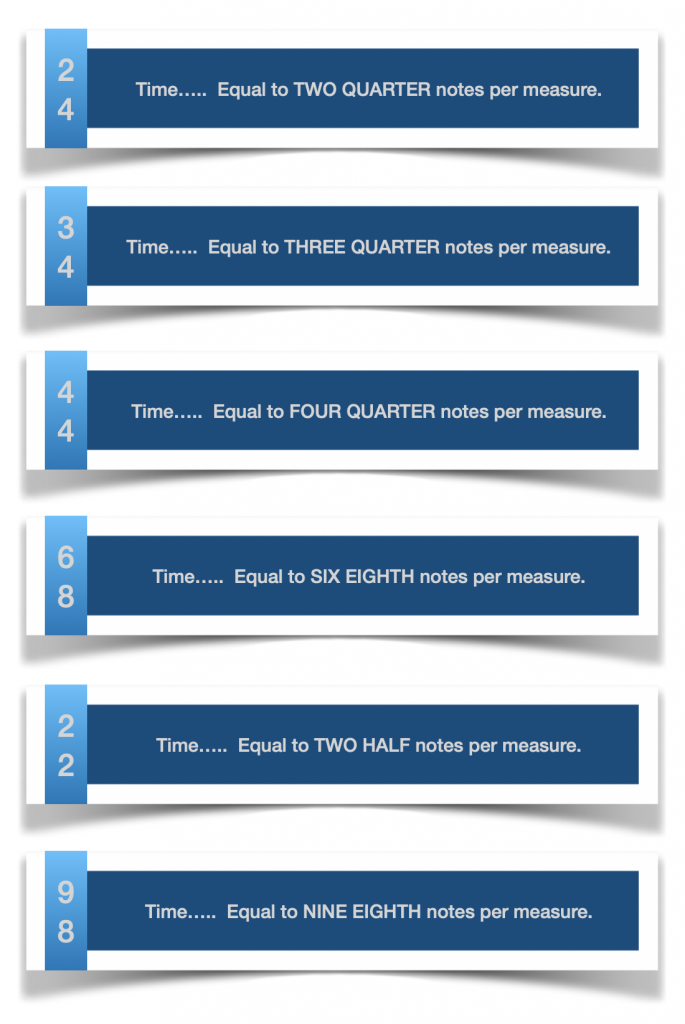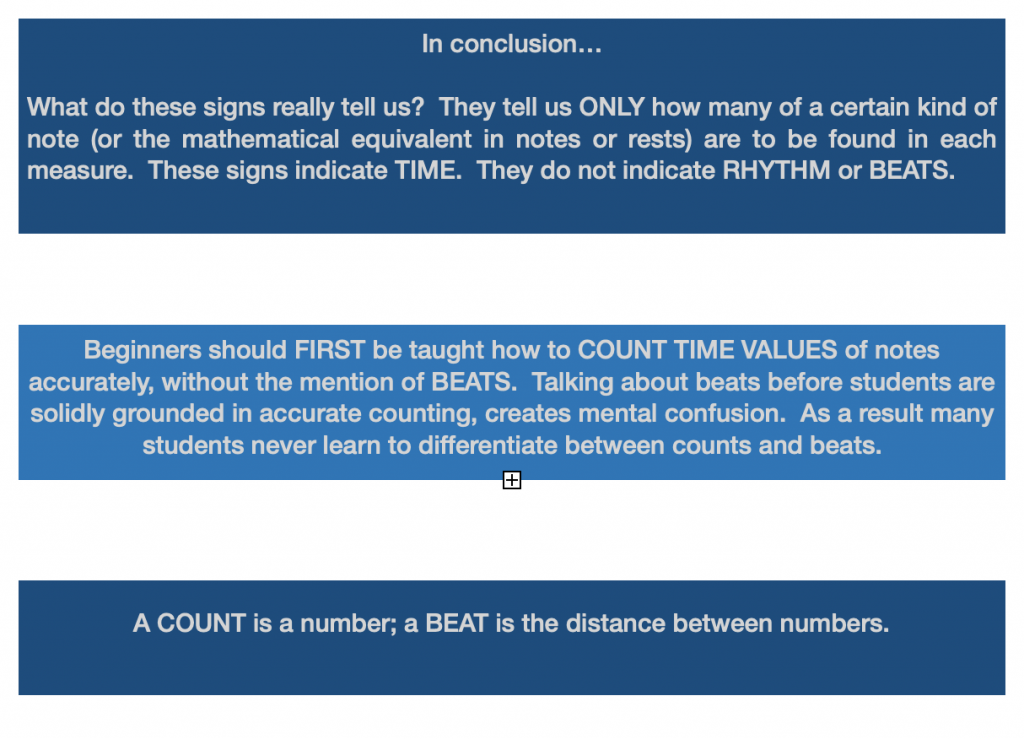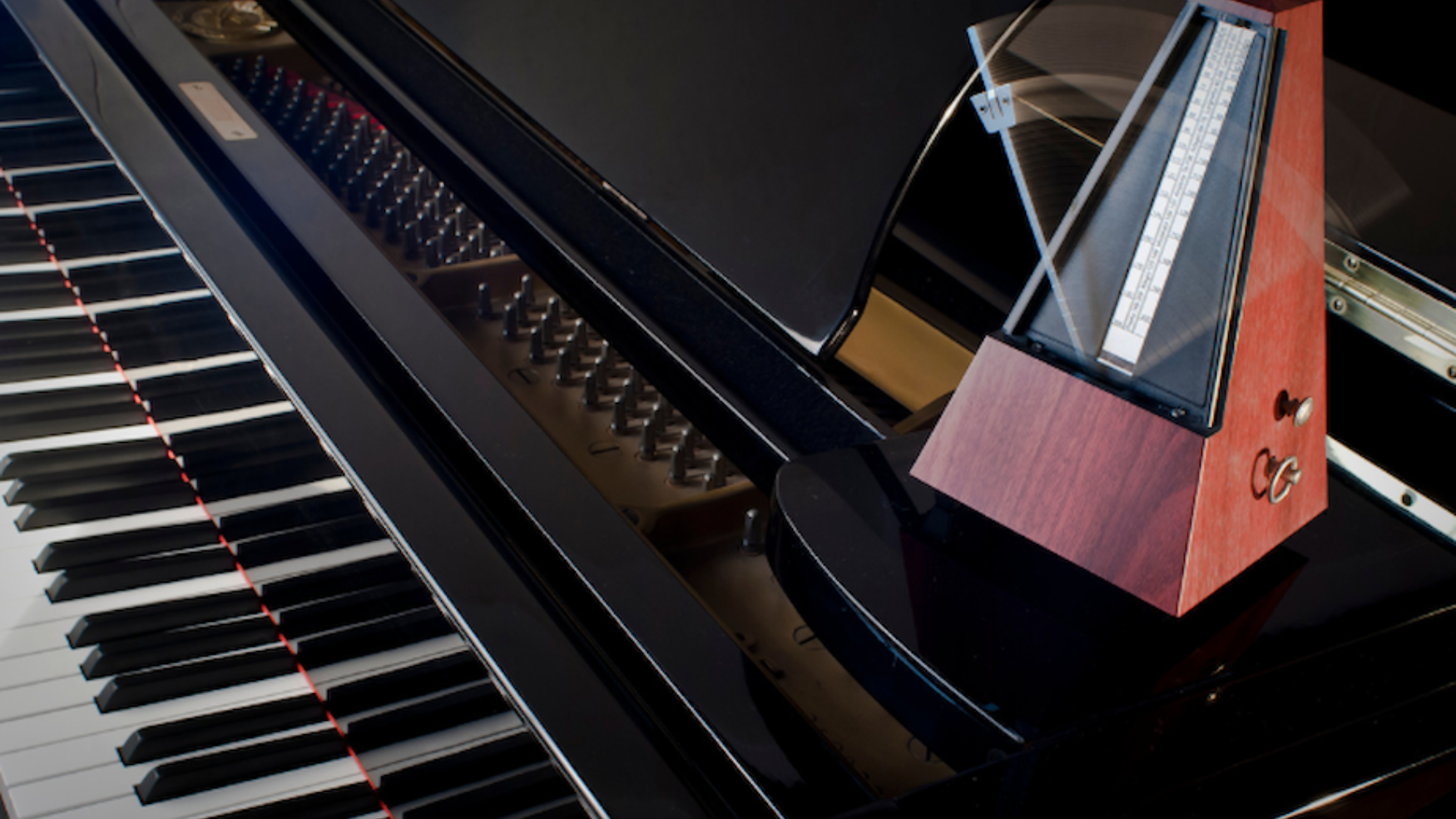Introduction
In music, there are many traditional ideas or concepts that have been taught and passed down through the years that are only “half-true”. This series of ideas, developed by H.E. Nutt, co-founder of VanderCook College of Music, seeks to make you think of improved ways of teaching the student. His concept was that “why do we teach “half-truths”, only confusing the student and interfering with their progress?” If we teach the student exactly what the concept means from the beginning, we will eliminate the long term confusion and so when the student progresses, they will do so without questioning the validity of what was taught in the first place.
This series can be “controversial”, so proceed with caution…
Series One
TIME SIGNATURES

What do these signs tell the student?
What does 3/4 mean?
The traditional answer is….
“The upper figure tells the number of beats per measure, the lower figure tells what kind of note gets one beat.”
Therefore in 3/4 time, the 3 (upper number) tells you there are THREE BEATS per measure and the 4 (bottom number) tells you a QUARTER NOTE gets one beat.
This is a HALF-TRUTH…
This is WHY the traditional method is a HALF-TRUTH….
In some cases the quarter note DOES get one beat, but there are many instances in which the quarter note does NOT get one beat. An example…. In a “Tempo di Valse”, one beat per measure, a quarter note gets only 1/3 of the beat. (It takes 3 quarter notes to make one beat, therefore each quarter note gets only 1/3 of a beat). Being set in the idea that a quarter note gets ONE BEAT, the student has difficulty in changing their thinking. As a result the quarter notes in a one beat per measure waltz are played too long and too heavily. The music is therefore “draggy” and dull, lacking life and pep.
What does 3/4 really mean?
That’s all it means. It can be any combination of notes and rests as long as it adds up to the value of THREE QUARTER notes per measure. Here are some examples….


That’s all it means. It can be any combination of notes and rests as long as it adds up to the value of THREE QUARTER notes per measure. Here are some examples….


What does 6/8 really mean?


6/8 can be two beats per measure, as in a 6/8 march; three beats per measure; and also six beats per measure. Certainly, no one beats six beats per measure in a 6/8 march. So if you use the traditional method that the top number is 6 beats per measure and the bottom number tells you the eighth note gets one beat, this would not be true in the 6/8 march nor the 6/8 with three beats. It would only be true if the music was directed with 6 beats per measure, which is typically a slower 6/8 time. Here are some examples.


What does 7/8 really mean?.


Any “mixed meter” time signature would fit the explanation that is indicated here and not fit the traditional explanation of time signatures. The only time the traditional explanation would really work is in a slow 7/8 time where each eighth note received the beat. Many times 7/8 is grouped into different beats of three.
12-34-567; 123-45-67; 12-345-67
The new way of thinking works well for all mixed meters and you don’t need to change the explanation for more advanced students. Here are some examples.


So, we should say…


I hope this information is informative and will help you help your students have less confusion when learning about music symbols. From personal experience, some of the “Half Truths” were problems that I encountered as a young music student and was consistently told I was “wrong”. Then I attended VanderCook College of Music and learned about the “Half Truths” from Dr. Richard Brittain and Dr. Victor Zajec, professors and it reinforced the idea that “the traditional way” was simply more confusing to learn. When there is a more direct and less confusing path.
Stay Tuned to the next issue…. Half-Truth Series Two…. “How many counts does a quarter note get?”





